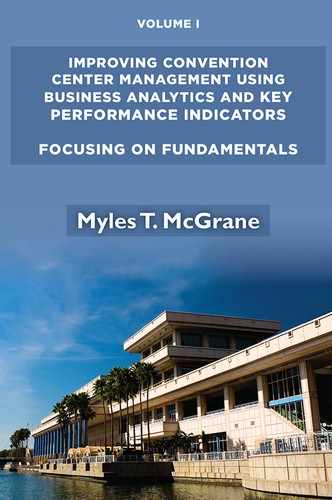KPI: Human Resources Summary
Owner |
Human Resources Department |
Data Sources and Collection |
Data collection and reporting is the responsibility of the Human Resources Department. |
Reporting Frequency |
Semi-annually |
Why This KPI Is Useful
This KPI is a collection of HR metrics. They are presented in a summary form because of their close interrelationship. Reviewed in this fashion, they depict a clear picture of an organization’s health; morale, productivity, and reputation. Included in the summary are the following elements.
• Absenteeism: High absenteeism is indicative of personnel problems. Tracking absenteeism may uncover systemic absenteeism in certain departments. It may also be more widespread and become a much larger problem to solve.
• Turnover Rate of Top Performing Employees: Some turnover
in an organization is expected and may be beneficial if those leaving were poor performers. Problems arise when unexpected and unwanted turnover occurs. Loss of top performers due to voluntary resignations is particularly negative and comes at a higher cost. These employees probably have other employment options, making their retention an important indicator as to whether your center’s leadership, work environment, growth opportunities, and compensation levels are effective.
• Percentage of Management and Supervisory Staff with Below Average Performance Reviews: This metric tracks the amount of low-performing employees. If the percentage is considered high, other KPIs will also show unfavorable performance.
• Number of Instances that HR Has to Intervene: Examples are terminations for cause, hostile work environment issues, inappropriate behavior, discrimination, and dishonesty.
• Number and Outcome of Labor Union Grievances: The number of grievances and arbitration caseload could be signaling several things; an undercurrent of unrest, a few workers with selfish reasons are causing unrest, or a management problem. Grievances for personnel actions (suspension, terminations) are not unusual and are expected. Grievances challenging work rules, such as what an exhibitor may do in building their exhibit, or for jurisdictional disputes among unions are more serious. An arbitration ruling unfavorable to the convention center can adversely affect business financially but more so reputation wise.
• Number of Workman’s Compensation (WC) Claims: A high number of claims is supposed to be indicative of injuries due to unsafe practices. In our industry there are few workplace injuries. When the number of claims rises beyond the norm, WC insurance premiums will balloon. Insurance carriers advise that the more likely cause is fraud. Employees take advantage and file false claims with impunity. These individuals can influence others. Beyond higher premiums, the results are often an ineffective and indifferent workforce. After a time, the insurance carrier will increase the WC Experience Modification Rating (EMR), causing premiums to spike, and, if not controlled, scrutiny by the government.
Hold these statistics to a reasonable percent or number. Do not let them get out of hand. Use this KPI to see trends as they develop. There is no industry benchmark for these statistics. You may create one just for your center. Use it as a long-term goal or find a reliable benchmark for B2B industries.
Managing Unfavorable Conclusions and Inferences
When the conclusions and inferences are decidedly unfavorable this KPI is a measure of the worst characteristics of a work force. It may not cover the uplifting aspects of employee morale and engagement, but for certain, it will identify symptoms of problems to come. It’s best to take action when the indicators are trending negatively. Keep senior management well informed and give options to reverse and solve the negative trends. Morale, genuine interest, and engagement of employees who work for a convention center are critical factors in every aspect of business performance. Event attendees are only with us as a few days, so an unfavorable experience tends to be remembered. Their expectation is that our grand meeting places are attractive, functional, comfortable, and safe. For exhibitors the experience and interaction with staff and labor is much more intimate. It’s face-to-face and if we are not assisting in event production, we are solving their problems.
How to Calculate and/or Organize Data
1. The calculation for absenteeism, turnover, and below average performance reviews is the quotient of the number of employees fitting those circumstances described, divided by the total number employees in each category.
2. The number of HR interventions, union greivances and WC Claims is a simple count.
3. Work Sheet 9.1 is an example of how to track these statistics.
4. Work Sheet 9.1a is an example of how to track labor union grievances.
Table, bar graphs, or both, comparing current YTD, previous YTD.
HUMAN RESOURCES SUMMARY – 2019 |
||||
2016 |
2017 |
2018 |
2019 |
|
Absenteeism |
4.5% |
4.5% |
6.9% |
7.1% |
Turnover Rate - Top Performers |
0.0% |
0.0% |
3.0% |
3.5% |
Below Average Performance Reviews |
4.0% |
4.6% |
4.9% |
5.1% |
HR Interventions |
3 |
3 |
4 |
7 |
Number of Union Grievances |
2 |
4 |
5 |
|
WC Claims |
2 |
1 |
4 |
8 |
Work Sheet 9.1 - Human resources summary
RECORD OF UNION LABOR GRIEVANCES |
||||
Grievance |
CBA |
Settled? Y/N |
Arbitration Won/Lost |
Remarks |
Termination for Cause |
IUOE |
N |
Grievance withdrawn |
|
Juris. Dispute - Carps vs. Teamsters- operation of material lifts |
IBT |
N |
Lost |
Bad loss; IBT will increase time and cost for event exhibit bldg. |
Work Rule - Employees must wear uniform |
IBEW |
N |
Won |
Good win for mgt rights clause, |
Suspension w/o pay |
SEIU |
N |
Won |
|
Suspension w/o pay |
IBT |
N |
Lost |
|
Work Sheet 9.1a - Record of union labor grievances
